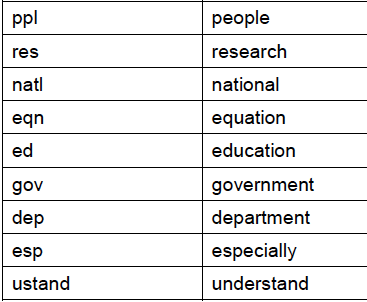Effective Note-Taking and Study Habits
When faced with a lecture that seems to contain vast amounts of information, taking notes and studying may feel overwhelming. Take a deep breath: you don’t need to capture and memorize everything said in class. Successful students think in three stages: record what’s most important during class, reduce notes to an accessible format soon after, and review those notes consistently. Below are tips for each stage.
Record
Think of note-taking in class as a way to actively conceptualize material as you take it in. By writing something in your own words, you’re able to process new information and concepts, as well as remember them later.
Focus on the main idea of the lecture or reading. At the beginning of the lecture, your professor may outline questions, objectives, or key concepts. Note these key points as a frame for the important information you’ll want to focus on.
Listen for key terms and ideas to record: names, historical events, artworks, new vocabulary. Try to summarize the who, what, where, when, why, and how.
Make notes visual. Copy helpful diagrams or charts, sketch images and objects being discussed, or create your own figures and symbols that help you understand and remember concepts.
Some people find taking notes by hand helps with remembering later
When taking notes digitally, use format features such as underline, highlight, and bold
Use shorthand. It’s impossible to document every word that your professor says. Abbreviations and symbols can help you keep up. Create your own or try this popular form of short-hand:
Mark things that are unclear and jot down your own questions and thoughts as you go. You can bring them up during discussion, ask for clarification later, or research on your own time.
Leave blank space on the page for the professor’s answer and others’ responses.
Don’t be shy about asking questions. Chances are, someone else in the class has the same question. Plus, it counts as class participation.
If you prefer a one-to-one conversation with your instructor, email them or visit during their office hours.
Reduce
After class, revisit your notes and revise them into a format that is easier for you to follow. You might condense your notes around keywords, visualize some content, restructure with headings and subheadings, or add prompts that will trigger a related thought on the subject. Find a method that suits your learning style. Below are a couple of strategies to get you thinking.
Cornell Notes: Draw a line down the page and put keywords and important concepts in the left column. Provide details in the form of bullets, diagrams, or sketches in the right column. After organizing your notes this way, try to summarize them into a few sentences. This example contains notes from a Ted-Ed video, “Difference Between Art & Craft.”
Visual Notes: Have both the class notes and any drawing tools you may need ready and in reach. Translate your notes into hand-drawn images and text and organize them into visual prompts that highlight the big concepts and communicate the overall point. This example is based on the same video as the Cornell notes.
Review
When we study, we read through our notes to better recall and understand information. But studying is not just reading; it’s dedicating extended time and attention to a subject. It may even involve research and working with others. Give yourself time, space, and tools that work for your learning style—and do so consistently to avoid the all-night cram session.
Set a dedicated study time when your mind is most ready for it. Are you a morning, afternoon, or evening learner? Notice moments of motivation and utilize them to your benefit. Consider:
When do you prefer to wake up? When do you prefer to go to bed?
Do you feel more motivated after lunch, or less? Can you concentrate better after eating?
When do you feel fresh, energized, and full of mental energy?
Develop a routine and stick to it! Allocate two to three hours of studying for every hour of class each week. Break it up into study blocks. The Pomodoro Technique, for example, puts you to a task for twenty-five minutes, followed by a five-minute break. Or maybe you prefer to focus for forty-five minutes at a time, with fifteen-minute breaks between each block. And don’t forget to schedule—and actually get—enough sleep in order to absorb information while you study.
Try different study techniques:
Notecards are a helpful tool. They’re small and portable enough to use while in transit or during brief moments throughout the day, and can fit both text and imagery. Split information onto both sides of the card so you can quiz yourself and others. Shuffle the cards and review them repeatedly; the more often you review, the faster it’s stored into your long-term memory. Digital options like Quizlet, Kahoot!, and Typeform are a great alternative.
Mnemonic Memory Devices are a creative way to memorize important facts and principles. The device uses each letter from a significant phrase or sentence to create a shorter version of the information. For example, one may find it difficult to recall all nine planets in the solar system in order. Instead, create a silly sentence with the same first letters as the planets:
Mercury, Venus, Earth, Mars, Jupiter, Saturn, Uranus, Neptune, Pluto
My Very Earnest Mother Just Served Us Nine PicklesAccountability groups are networks of peers that support one another through study sessions outside the classroom. Connect with classmates and set a time to review notes and discuss readings, lectures, and assignments every week. You might break up a reading into sections and have each person read and reteach a section to the rest of the group (called Jigsaw Reading). You could watch lectures together and discuss everyone’s questions. You can act as each other’s sounding board, engaging with the material, reflecting, and thinking both individually and as a group.
There’s no one right way to take notes and study. What matters most is that you’re able to discern important information in class, set up clear and concise notes you’ll understand later, and return to them regularly to absorb the information. As you experiment, come talk to a tutor about the approaches you’re trying and work through new approaches together.




